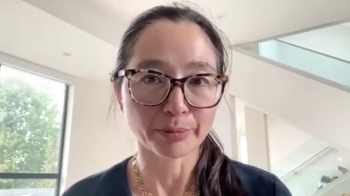
Patients with uveal melanoma who have tumors larger than 2 mm are candidates for brachytherapy plaque with vitrectomy and silicone oil.

Your AI-Trained Oncology Knowledge Connection!


Patients with uveal melanoma who have tumors larger than 2 mm are candidates for brachytherapy plaque with vitrectomy and silicone oil.
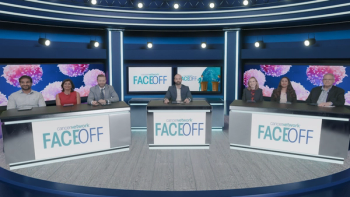
Panelists discuss how to choose between first-line (1L) luspatercept vs erythropoiesis-stimulating agent (ESA) therapy for SF3B1-negative patients with lower-risk MDS (LR-MDS) with erythropoietin (EPO) levels under 200 mU/mL. Team Whataburger argues that luspatercept’s superior response rates (60% vs 40%) and survival benefits make it the clear frontline choice, while Team In-and-Out counters that ESA remains viable for minimally transfusion-dependent patients due to cost considerations and potential for sequential therapy approaches.

Panelists discuss how the IMerge trial data demonstrate imetelstat’s efficacy in SF3B1-negative patients with lower-risk MDS who failed ESA therapy, achieving substantial hemoglobin improvements (averaging 4-5 g/dL in responders) with meaningful transfusion independence rates. They debate the clinical significance of modest patient-reported quality-of-life improvements and question whether historical hemoglobin ceiling limits should be reconsidered given robust treatment responses.

Tara M. Graff, DO, MS, stated that combination therapy approaches may be the optimal route forward for advancing MZL care.

“…if [there’s] a younger patient with MZL, I’m willing to risk a little extra toxicity to give them a longer-term remission,” said Tara M. Graff, DO, MS.

Subcutaneous mosunetuzumab achieved consistent rates of complete responses across various high-risk marginal zone lymphoma subgroups.

Beyond DNA-centric diagnostics, protein-based methods may play a role in accurately matching patients with the most effective therapies.
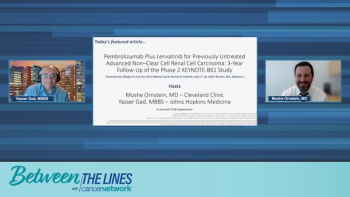
Panelists discuss how managing the safety profile of pembrolizumab plus lenvatinib requires proactive patient education and early toxicity identification, with approximately 25% of patients discontinuing therapy due to adverse events in both clinical trials and real-world practice, emphasizing the importance of distinguishing between tyrosine kinase inhibitor (TKI) and immunotherapy-related adverse events for appropriate management.

Panelists discuss how the KEYNOTE-B61 study demonstrated impressive survival outcomes with a median progression-free survival (PFS) of 17.9 months and median overall survival (OS) of 41.5 months, effectively doubling the historical tyrosine kinase inhibitor (TKI) monotherapy benchmarks of 8 to 9 months PFS and 21 months OS in patients with non–clear cell renal cell carcinoma (RCC).

Biomarker research is needed to better ascertain patient benefit with tarlatamab among those with relapsed extensive-stage small cell lung cancer.

Biochemical markers and advanced imaging modalities play a critical role in monitoring patients undergoing RLT therapy for metastatic prostate cancer.
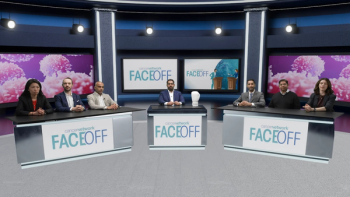
Experts discuss the trade-offs between long-term efficacy and real-world tolerability in EGFR-mutant non–small cell lung cancer (NSCLC) treatment, debating innovative targeted regimens vs familiar chemotherapy-based approaches and emphasizing the importance of personalized care, supportive infrastructure, and shared decision-making in optimizing outcomes.

Experts have a nuanced debate on frontline treatment for EGFR-mutant non–small cell lung cancer (NSCLC) with brain metastases, contrasting the central nervous system (CNS) efficacy and clinical familiarity of chemotherapy-based combinations with the precision and potential durability of newer targeted regimens, ultimately emphasizing individualized care and critical appraisal of trial data.
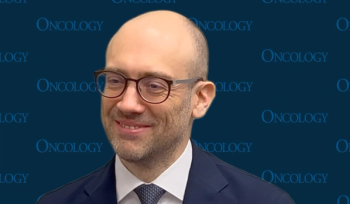
There will be an unmet need for therapy in patients with aggressive lymphomas who did not benefit from therapy with bispecifics, CAR-T, chemotherapy, and targeted therapy.

Less lymphocyte depletion with twice-daily radiotherapy warrants further assessment to optimize the synergistic effect of radiotherapy and immunotherapy.

David Rimm, MD, PhD, discussed how AI tools may help automate routine tasks for pathologists and predict genomic alterations from images.

Panelists discuss the evolving clinical trial landscape in non–clear cell renal cell carcinoma, highlighting ongoing studies of combination therapies integrating TKIs and immuno-oncology agents, the challenges of rare subtypes, and the critical role of trials and support networks in advancing personalized treatment options.

Panelists discuss the KEYNOTE-B61 phase 2 trial of lenvatinib and pembrolizumab in non–clear cell renal cell carcinoma, highlighting its promising response rates, durable remissions, and subtype-specific outcomes, while emphasizing the need for further research to refine treatment approaches across diverse histologies.

The recent accelerated approval of tarlatamab marks a significant milestone in treating relapsed extensive-stage small cell lung cancer (ES-SCLC).

Data support the use of radioligand therapy in combination with androgen receptor pathway inhibitors to optimize prostate cancer outcomes.
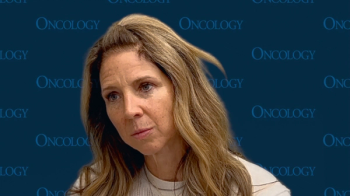
The subcutaneous formulation of mosunetuzumab will require 17 cycles of therapy, without any maintenance, and can be done in outpatient settings.

Twice-daily thoracic radiotherapy appeared to confer less leukocyte and lymphocyte depletion compared with once-daily radiation in LS-SCLC.
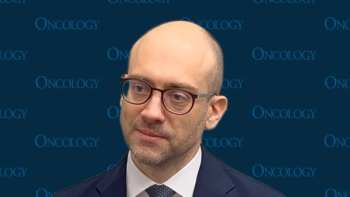
Respiratory, viral, and bacterial infections have emerged as a toxicity of note during bispecific antibody treatment for indolent lymphoma.
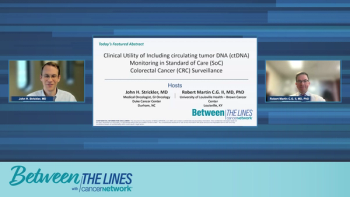
Experts discuss how the evolving landscape of patient access to medical information challenges clinicians to stay current and communicate effectively, while emphasizing the expanding role of circulating tumor DNA testing across multiple cancers—offering more precise, personalized treatment guidance and paving the way for earlier, targeted interventions that improve patient outcomes and quality of life.
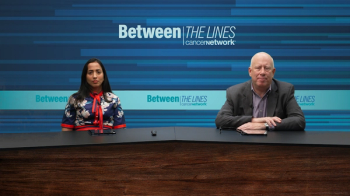
Panelists discuss how the COCOON regimen's tolerability and effectiveness in reducing dose interruptions will improve patient experience and outcomes, requiring substantial nursing support and patient education for successful implementation in clinical practice.

Experts discuss that although financial concerns about ctDNA testing exist, they are generally manageable with patient education and transparent communication, and that incorporating ctDNA into formal clinical guidelines could reduce insurance barriers and alleviate patient anxiety, ultimately enabling broader access to this valuable personalized cancer monitoring tool.

Experts discuss how real-world data counter concerns that ctDNA testing increases patient anxiety, highlighting that most patients feel more reassured and confident in their care when receiving personalized ctDNA results, which supports its integration into routine surveillance to improve both clinical decision-making and patient quality of life.

Panelists discuss how the COCOON study demonstrated a significant reduction in grade 2 or higher dermatologic adverse events from 73% to 41%, with particularly notable improvements in face, body, and scalp rashes while maintaining comparable response rates.

David Rimm, MD, PhD, shared the rationale behind developing an AI-driven tool for quantifying tumor-infiltrating lymphocytes in melanoma.

Tarlatamab has demonstrated superiority to lurbinectedin as a treatment for patients with ES-SCLC who have progressed after frontline chemoimmunotherapy.